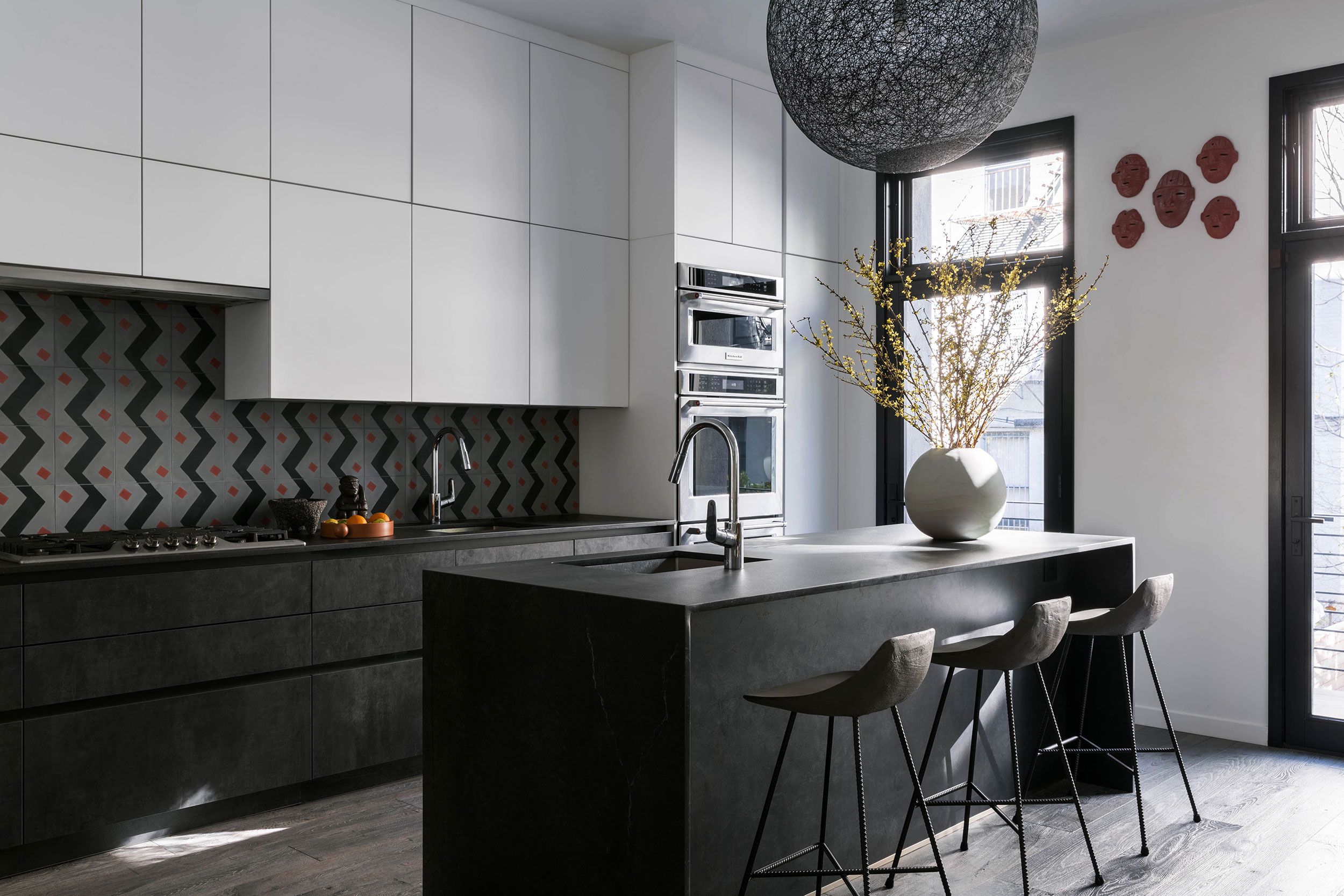Aesthetic Considerations

The choice between white and black kitchen cabinets significantly impacts the overall aesthetic and functionality of the space. Both offer distinct advantages and disadvantages depending on the desired style, room size, and personal preference. Understanding these differences is crucial for creating a cohesive and visually appealing kitchen design.
Visual Impact of White and Black Cabinets in Different Kitchen Styles
The visual impact of white and black cabinets varies dramatically depending on the overall kitchen style. White cabinets tend to create a brighter, airier feel, while black cabinets offer a more dramatic and sophisticated look.
| Kitchen Style | White Cabinets Description | Black Cabinets Description | Overall Aesthetic Impression |
|---|---|---|---|
| Modern | Clean lines, minimalist aesthetic, often paired with sleek hardware and countertops. Creates a bright, spacious feel. | Adds a touch of drama and sophistication. Can be paired with metallic accents for a high-end look. | Modern white kitchens feel open and airy, while modern black kitchens feel sleek and luxurious. |
| Traditional | Provide a classic and timeless look, often complemented by ornate hardware and detailed crown molding. Can feel warm and inviting. | Offer a bold contrast, creating a dramatic and upscale feel. May be paired with antique or dark-toned hardware. | Traditional white kitchens are classic and elegant; black kitchens offer a more unexpected and opulent twist. |
| Farmhouse | Enhance the rustic charm, often paired with light-colored countertops and natural wood elements. Create a bright and airy feel, suitable for a casual atmosphere. | Provide a striking contrast against the typically light and airy farmhouse style, adding a touch of unexpected sophistication. | Farmhouse white kitchens embody rustic charm; black kitchens add a modern, edgy contrast to the traditional style. |
Effect of Cabinet Color on Room Size and Brightness
White cabinets reflect light, making a kitchen appear larger and brighter. This is particularly beneficial in smaller kitchens or those with limited natural light. Black cabinets, conversely, absorb light, potentially making a kitchen feel smaller and darker. However, strategically placed lighting can mitigate this effect.
White cabinets benefit from softer, diffused lighting to avoid harsh shadows. Recessed lighting, under-cabinet lighting, and pendant lights can create a warm and inviting ambiance. Black cabinets, on the other hand, benefit from brighter, more focused lighting to highlight their sleekness and prevent the space from feeling too dark. Consider using a combination of ambient, task, and accent lighting to create a balanced and well-lit space.
Backsplash and Countertop Choices to Complement White and Black Cabinets
Choosing the right backsplash and countertop materials can significantly enhance the overall aesthetic of a kitchen with either white or black cabinets. Careful consideration of color and texture is essential for creating a harmonious design.
White Cabinets:
- Backsplash: Subway tile (white, light gray, or pastel colors), patterned tile (subtle patterns), marble, or glass tile.
- Countertops: Quartz (white, gray, or light-colored), marble (white or light-colored), granite (light-colored), butcher block (light wood).
Black Cabinets:
- Backsplash: White subway tile, metallic tile (gold, copper, or silver), bold patterned tile (geometric or floral), or a dark stone backsplash that complements the cabinets.
- Countertops: White quartz or marble, light-colored granite, or a dark countertop material like black granite or soapstone to create a dramatic contrast.
Design and Style Integration: White Vs Black Cabinets

Choosing between white and black kitchen cabinets significantly impacts the overall design. The integration of these cabinets requires careful consideration of complementary elements like hardware, flooring, and appliances to create a cohesive and aesthetically pleasing space. Success hinges on understanding how different materials and color palettes interact to achieve the desired style.
The selection of hardware, flooring, and appliances plays a crucial role in unifying the kitchen design, regardless of whether white or black cabinets are chosen. For example, metallic hardware can complement both, while the flooring choice sets the foundation for the entire room’s visual appeal. Appliances, particularly the refrigerator and range hood, often serve as prominent focal points, and their colors should be carefully considered to maintain visual harmony.
White Cabinet Kitchen Design Concepts, White vs black cabinets
A white kitchen offers a versatile canvas, capable of accommodating various design styles. The following concept illustrates a contemporary white kitchen:
- Overall Style: Modern and minimalist.
- Materials: Shaker-style white cabinets with matte finish, quartz countertops in a light grey or white, and stainless steel appliances.
- Color Palette: Predominantly white and grey, with subtle pops of color from accessories like artwork or textiles. The backsplash could be a simple white subway tile or a neutral-toned stone.
Black Cabinet Kitchen Design Concepts
Black cabinets create a dramatic and sophisticated atmosphere. This concept showcases a modern black kitchen:
- Overall Style: Sleek and modern, with a touch of industrial flair.
- Materials: Flat-panel black cabinets with a high-gloss finish, dark grey or black granite countertops, and black stainless steel appliances for a cohesive look. A brick or dark-toned stone backsplash would add visual texture.
- Color Palette: Primarily black and dark grey, punctuated by warm metallic accents like brass or copper in the hardware and lighting fixtures. Wood elements, such as a butcher block island top, could add warmth and contrast.
Psychological Impact of Cabinet Color
White kitchen cabinets evoke feelings of cleanliness, spaciousness, and airiness. The bright, reflective surface creates a sense of openness, making smaller kitchens feel larger and more inviting. This bright and airy atmosphere contributes to a feeling of calm and serenity. White is often associated with purity and simplicity, promoting a sense of order and organization.
Conversely, black kitchen cabinets project a sense of sophistication, drama, and luxury. The dark color creates a more intimate and moody atmosphere. Black can make a statement, highlighting architectural details and creating a visually striking focal point. While some might find black overpowering, it can also create a feeling of warmth and coziness, particularly when paired with warm lighting and contrasting materials. The richness of black provides a sense of depth and complexity.
